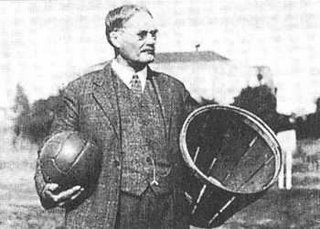After knowing on history and some original rules of the basketball, I think that we must verify on the position of the player… The five tactical positions of the basketball used normally by the organized equipment of basketball are: center, power forward, small forwad, and point guard. The rules of the basketball do not assign them by mandate, and in informal games they are not used sometimes. They are grouped in two conceptual units: the frontcourt and the backcourt.
Position of Backcourt
Center
Center often called the "five", the center plays generally as heart of the team, also called the post player. The center is not generally the best gunner in the equipment but most of the times they are the player more hard in the equipment and can maneuver under low point in the paint to make most of his write down. The center is used a lot of times for pick and roll plays which involve himself and the point guard. In the professional basketball and the university, the height for a center is of near 6'10" / 2.08 m or taller. Hardly because the centers are often the greatest people in the cut do not mean that he is less expert anyway. To take to the strong ball the basket is a key to win and to inculcar fear in opponents. If your equipment has a strong center, you finish upon most of obtaining the bounces that do not give return in points to no matter if bounces were or defensive offensive. Remarkable NBA centers assets at the moment includes Shaquille O'Neal, Ben Wallace, Yao Ming, Zydrunas Ilgauskas, Marcus Camby, Dikembe Mutombo, and Alonzo Mourning.
Power Forward
Power Forward, also designated the "four", it plays generally in the opposed side of the key of the center, and can frequently double like center. The PF is little more movable than centers, that help you to fix many games for above to the cut. Most of the PF can throw the middle shots of range, extending not more than ten on 15 feet far from the basket. The PF generally the range of near 6'7" / 2.01 m or highest ones in the game of the men, and also it tends robust to be constructed, with most of they extending from 230-260 lb/105-120 kilogram. The remarkable active Power Forward of NBA's forward includes Kevin Garnett, Jermaine O'Neal, Rasheed Wallace, Elton Brand, Tim Duncan, Amare Stoudamire, Kenyon Martin, Dwight Howard, and Dirk Nowitzki.
Small forward
Position of the Frontcourt
Point Guard
Point Guard or also called the "one", is the floor of the general equipment and the best one to ballhandler in the equipment. It is generally fastest, or one of the fastest players in the floor. It occurs the task always of controlling the speed and the possession of the game of the ball. A protector of the good point watches to obtain the rest of the implied equipment before he thinks to throw. Nevertheless, it is always ready to create shots and the account indicates in case of necessity. The protectors of the point work to equipment and are generally one of the shortest players on the court. The protective means of the point classify typically for above in 6 "5" /1.96 m inferior in the basketball of the professional men and schoolboy. The remarkable active point guard of the NBA includes Jason Kidd, Mike Bibby, Stephon Marbury, Chris Paul, Steve Nash, Chauncey Billups, Allen Iverson, Jason Williams, Dwayne Wade, Gilbert Arenas, Tony Parker, Steve Francis, Chris Paul and Baron Davis.
Shooting Guard
Shooting guard (also called the "two"), as they suggests his name, is generally the best shooter of the teams. A SG must be able to constantly strike 20 feet (6 meter) jump shot. In addition to being able to shoot to the ball, they also must be able to have good ball-directing abilities because they have to be able to create their own shot off the dribble. Finally, they should also be able to come off of any pick and roll and still make a shot without the ball touching the ground. . The average height of SG is range from about 6'2" / 1.88 m to 6'8" / 2.03 m in the professional basketball and the colleges. The SG that remarkable assets of NBA include Vince Carter, Ray Allen, Kobe Bryant, Richard Hamilton, Manu Ginnobilli, Jason Terry, Tracy Mcgrady, Jason Richardson, and Dwayne Wade. READ MORE...

